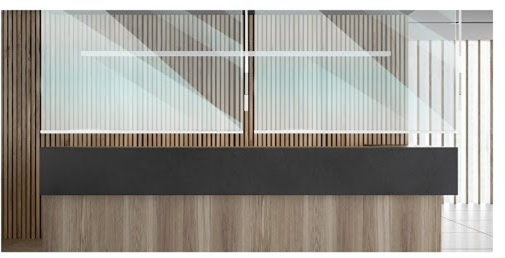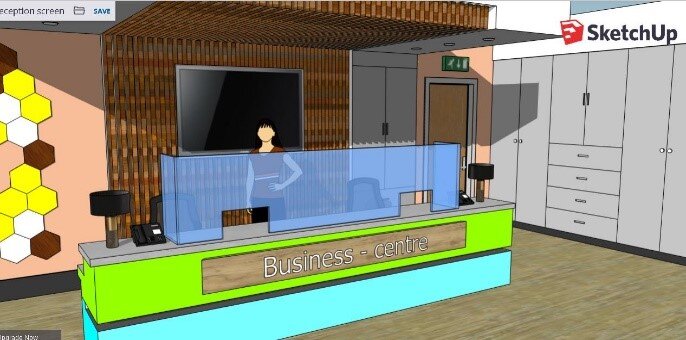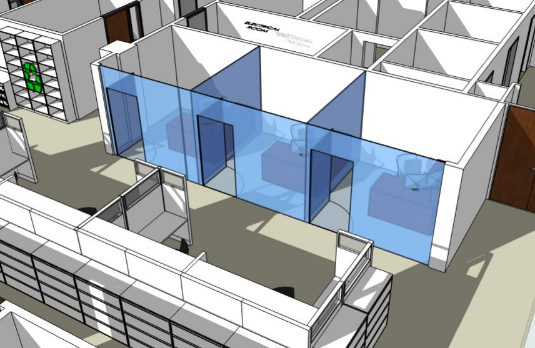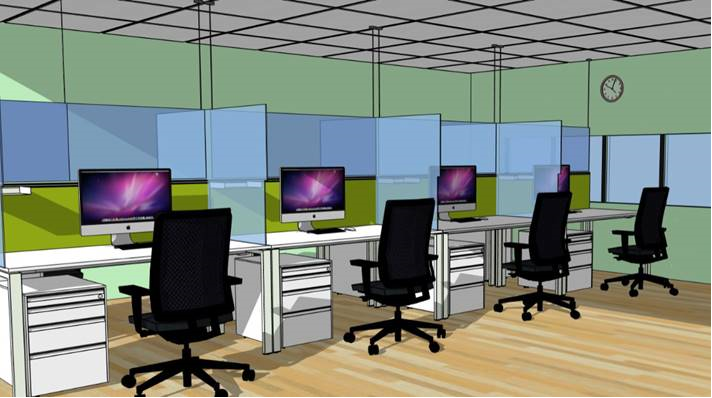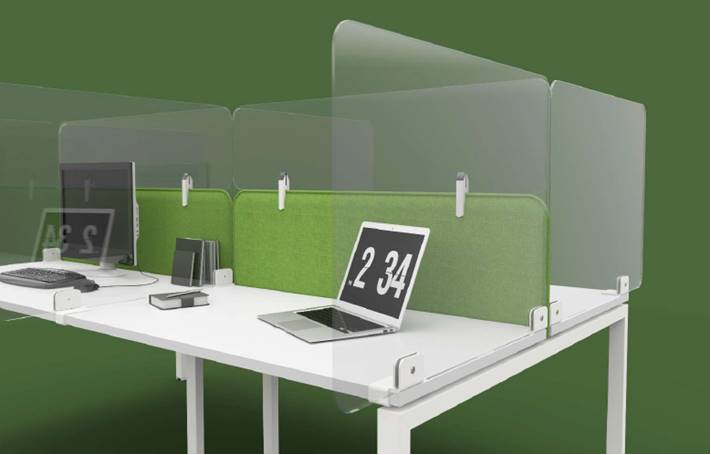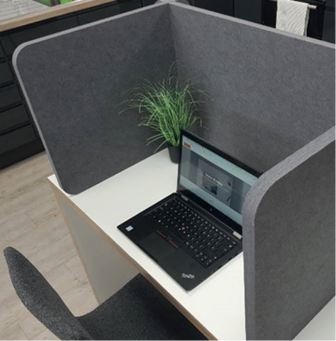Could 'closed plan' be the new buss word in commercial interiors?
COVID-19 has upended working life, changing how and where people do their jobs.
But with governments and companies around the world looking to ease lock-downs, minimising virus transmission at work is now at the top of many organisations’ agendas. Homeworking will continue, but office life “in some form” will, too. The challenge for companies is adapting workplaces with the minimal operational impact yet adhering to new social distancing rules.
For decades trends in office design have lent towards open-plan working. Could COVID-19 reverse this mega-trend, leading to a closed-plan future? Open floor plans were hailed as essential to collaboration and creativity, but cramming more people into expensive office space creates perfect conditions to aid the spread of viruses and increases workforce anxiety.
An investigation recently published by South Korea’s Centres for Disease Control shows how easily the coronavirus can spread in a crowded office space. On one floor of a call centre where 216 employees worked, 94 people tested positive for the virus. Investigators believe the outbreak happened over the course of 16 days beginning on February 21, and over 90 percent of the cases were concentrated in a densely clustered portion of the office.
MIT published earlier this month shows a sneeze can blast potentially infectious droplets as far as 27 feet, well beyond current social distancing guidelines. Limited space will make old-style cubicles unlikely to return, but companies may be compelled to add dividers on three sides of each desk. It may no longer be considered hygienic to have two people sitting side-by-side or face-to-face with nothing in between them. As time spent in closed-door rooms will have to be approached selectively with the number of people per room limited.
We at KIWI design are offering a range of permanent and more discreet segregation solutions. When used in conjunction with the government recommendations could help limit the transfer of Covid-19.
Further mitigating actions include:
Businesses and workplaces should make every reasonable effort to enable working from home as a first option.
Where working from home is not possible, workplaces should make every reasonable effort to comply with the social distancing guidelines set out by the government (keeping people 2m apart wherever possible).
Increasing the frequency of hand washing and surface cleaning.
Keeping the activity time involved as short as possible.
Using screens or barriers to separate people from each other.
Using back-to-back or side-to-side working (rather than face-to-face) whenever possible.
Reducing the number of people each person has contact with by using ‘fixed teams or partnering’ (so each person works with only a few others).
Finally, if people must work face-to-face for a sustained period with more than a small group of fixed partners, then you will need to assess whether the activity can safely go ahead.
No one is obliged to work in an unsafe work environment!



